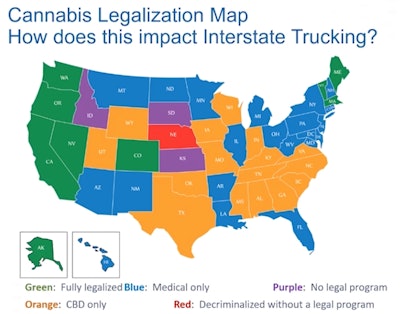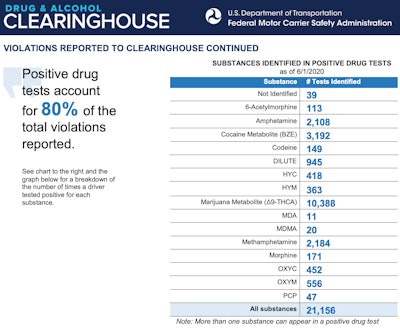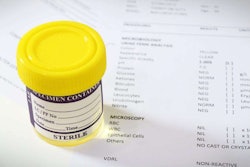If I had to describe 2020 to my grandparents, who passed several years ago, I’m not sure I could do it. Born, raised and retired in Alabama, they experienced economic depression, pandemics and civic upheaval in their lifetime, but not all in a span of six months.
The world is changing and it’s hard to keep up, even for non-retirees.
 For non-truckers, the rules and regulations for purchasing and using marijuana can vary wildly from state-to-state, but it’s still illegal to drive impaired.
For non-truckers, the rules and regulations for purchasing and using marijuana can vary wildly from state-to-state, but it’s still illegal to drive impaired.When I was in elementary school, we had D.A.R.E. assemblies in the gym featuring a rotating lineup of speakers spinning tales of life gone astray thanks to drug abuse. Fast forward to Driver’s Ed in my junior year and D.A.R.E. had been replaced by the dangers of drunk driving and the speaker replaced by an assistant baseball coach.
Another 20-plus years later and D.A.R.E. and Coach Wright reached a crossroads, as “just saying no” to one thing has led to saying yes to others.
Positive tests for marijuana use made up nearly 50% of the violations reported to the Federal Motor Carrier Safety Administration Drug and Alcohol Clearinghouse in its first five months.
For non-truckers, the rules and regulations for purchasing and using marijuana can vary wildly from state-to-state, but it’s still illegal to drive impaired. The rules are far more black and white for commercial drivers (it’s illegal to use and carry under any circumstances), yet still more than 10,000 positive marijuana tests have cycled through the Clearinghouse since it debuted in January.
Drunk driving numbers are falling among all motorists, but incidents of “drugged driving” (or driving while impaired) are increasing. In 2018, 75% of all drivers involved in a fatal crash tested positive for cannabis and multiple other substances in their system at the time of the crash, according to the Rocky Mountain High Intensity Drug Trafficking Area. More than 36,000 people died in highway crashes in 2018 (about the same as 2019), according to the National Highway Traffic Safety Administration, and almost 11,000 were due to impairment.
The Federal Motor Carrier Safety Administration estimates 0.8% of commercial drivers have used drugs while on the road. After alcohol, marijuana is the drug most often linked to impaired driving, said Darrin Grondel, vice president of traffic safety and government relations for the Foundation for Advancing Alcohol Responsibility, speaking as part of the Truckload Carriers Association Virtual Safety and Security Meeting Wednesday.
 Positive tests for marijuana use made up nearly 50% of the violations reported to the Federal Motor Carrier Safety Administration Drug and Alcohol Clearinghouse in its first five months.
Positive tests for marijuana use made up nearly 50% of the violations reported to the Federal Motor Carrier Safety Administration Drug and Alcohol Clearinghouse in its first five months.Carriers are required to remove drivers tagged with a drug and/or alcohol violation through the Clearinghouse from safety-sensitive functions, which includes driving, until they have completed a return-to-duty (RTD) process. Through June 1, nearly 20,000 drivers have been cited with at least one Drug and Alcohol Clearinghouse violation, but more than 15,000 had not started the RTD process. Another nearly 1,000 drivers have completed the RTD process.
Not all hazardous driving can be laid at the feet of alcohol and marijuana. Even prescribed drugs and over-the-counter medicines can cause basic motor skill impairments or trigger a positive test.
Cannabidiol (CBD) has skyrocketed in popularity in recent years, largely as an all-natural wonder drug for sufferers of chronic pain, anxiety or sleeplessness, among many other things. However, it’s only been approved for the doctor-prescribed seizure treatment Epidiolex.
“There are no known benefits for taking CBD over-the-counter,” Grondel said, adding there’s also some ambiguity on potential legal implications for drivers. “CBD still contains THC and, if tested after recent use, it would come up positive. You cannot take the main ingredients out of the plant.”
A driver taking Epidiolex for seizures would likely be medically disqualified in the first place, putting any driver who’s using CBD at risk of a positive drug test.
“So, if a driver used and is stopped and tested, they would likely come back positive for THC, depending on the time frame,” Grondel said, “and it could also show carboxy or byproducts of cannabis use.”
Most national studies on marijuana’s impact on driving focus on private vehicles and place little attention on commercial vehicle operators, so there is a lack of good data on CMV crashes. However, Grondel said, what isn’t up for debate is the misnomer that just because marijuana is now legal, it’s safe.
“We’ve seen marijuana go from 3% to 5% concentration to 93% to 94% concentration in some oils,” he said, adding research indicates THC levels have increased up to 10 times in the last 30 years in marijuana flower. “Those concentrations have a deep impact on the level of impairment.”
When smoked, marijuana can lead to impairment in between 1 and 30 minutes, with a lasting effect of 2 to 3 hours. When consumed orally, the effects are more delayed – 1 to 3 hours – and the effects can last from 4 to 8 hours, although Grondel noted a lot of additional research was needed to understand all the methods of ingestion and the effects, durations and long-term impacts.
“There’s no substance that you’ll ever take that will make you a better driver,” he said.
The U.S. Department of Transportation’s Rule 49 CFR Part 40 requires supervisors to attend two hours of training to recognize symptoms of alcohol and drug abuse. The purpose of the training is to teach managers to identify indicators that a driver is using or under the influence of alcohol or drugs, but there’s little formalized followup training, which Grondel said is key as the legalization of marijuana evolves along with the manners in which it can be consumed.
D.A.R.E. never covered THC brownies or gummies, or the fact that the effects of marijuana are not universal, and neither do current DOT guidelines. The balance between what is legal and what is safe is delicate here; much more delicate than dropping an egg into a rocket-hot frying pan. And there are plenty of questions.












